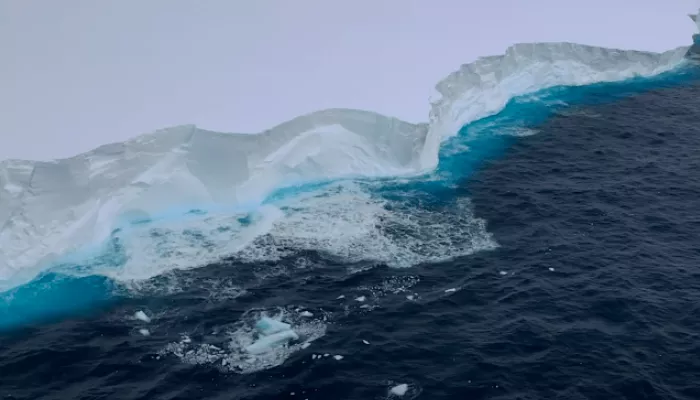A massive iceberg, weighing an estimated one trillion tons and covering 1,418 square miles, has broken free from its long-held position in Antarctica. Known as A23a, this colossal ice mass is now adrift in the Southern Ocean, following decades of being trapped in the Weddell Sea.
The British Antarctic Survey (BAS) confirmed the development last week, stating that A23a had previously been grounded on the seafloor north of the South Orkney Islands before becoming trapped in a vortex-like current known as the Taylor Column. For over 30 years, it was stuck in place, spinning in circles and unable to drift toward warmer waters. However, recent observations show the iceberg has finally freed itself from this grip and is now moving once again.
A23a originally calved from the Filchner Ice Shelf in 1986. Since its detachment, it has remained largely stationary, until now. Scientists are closely monitoring the iceberg’s movement, as it is expected to eventually enter warmer seas, where it will likely fragment into smaller pieces before gradually melting.
Dr. Andrew Meijers, an oceanographer with the BAS, expressed excitement about the iceberg’s movement, noting, “It’s exciting to see A23a on the move again after periods of being stuck. We are interested to see if it will follow the same path as other large icebergs that have calved off Antarctica, and more importantly, what impact this will have on the local ecosystem.”
The potential implications of the iceberg’s movement extend beyond scientific curiosity. Its eventual melting could contribute to rising sea levels, a process already linked to global climate change. However, questions remain about the impact on regional surf spots. While it’s unclear how surfing conditions will be affected in the coming decades, the changing climate suggests that some level of transformation is inevitable.
As the iceberg drifts toward warmer waters, its future remains uncertain, but it serves as a powerful reminder of the dynamic and shifting nature of our planet’s polar regions.
Related topics
- Hayden Rodgers Wins Puerto Escondido After Pipeline Scare
- Lompoc Surf Shop Robbed, Suspect Arrested
- Is Surfing an Art Form? Stacy Peralta Believes It Is

